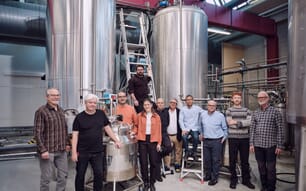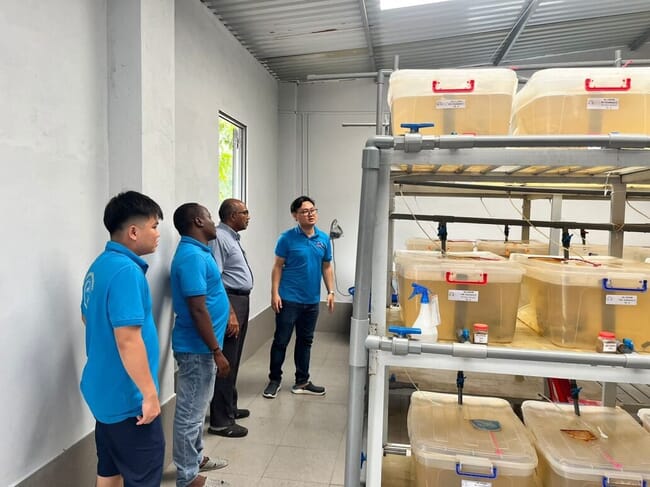
© Greensage Prebiotics
Ongoing health issues and an increasing emphasis on reducing antibiotic use are combining to make aquaculture ever-more challenging. But, on the up side, these conditions are also inspiring the research and development of new sustainable solutions to improve farmed animal health.
One such innovator is GreenSage Prebiotics, a Canadian company that’s been developing a natural and sustainable alternative to antibiotics in aquaculture since 2020 , and which is now gaining market traction, thanks to a product they’ve extracted from an abundant resource…the coconut.
“Many different types of pathogens start infections by looking to bind to specific receptors that line the digestive tract, or the urinary tract. Considering this, we decided to see if we could create a molecular decoy – something that these pathogens would bind to and then be carried out of the body before they can start an infection,” explains Brad Saville, CEO .
The search for such a decoy led the team to coconuts, as one of the only three known sources of the molecule.
“The other two are really difficult to work with, but coconut is a great starting material for sourcing this compound,” Saville reflects.
After several years of development, in 2022 GreenSage Prebiotics felt confident enough to trial their product, which they’ve branded Pretego, in vivo. The trials have involved a variety of species, including poultry, pets, salmon and shrimp, Saville says that they’ve led to consistently promising results.
Benefits for shrimp
One of the most compelling trials to date involved a six-week feeding study, followed by an early mortality syndrome (EMS) challenge, with ShrimpVet in Vietnam. This suggested that Pretego could be used throughout the production cycle, not just in times when shrimp were more vulnerable.
During the feeding study, “we saw an improvement of over 23 percent in the feed conversion ratio, an increase in growth rate, and a 27 percent increase in final biomass yield, which demonstrates that the benefits of Pretego extend beyond disease challenges. If you can see that improvement in FCR throughout the entire growth cycle, there’s a good case to be using the product throughout the cycle, even if producers don’t face a challenge with pathogens,” Saville observes.
Alternatively, shrimp farmers, could focus on the part of the growth cycle where shrimp are most vulnerable to pathogens.
“In the disease challenge study, shrimp that did not receive Pretego in their diet had a survival rate of only 24 percent, whereas the shrimp that consumed Pretego in their diet experienced a survival rate of 70 percent,” Saville explains.
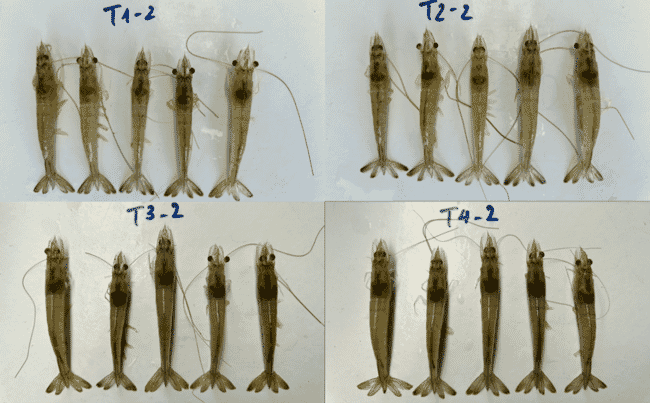
© Greensage Prebiotics
Return on investment
According to Saville, including Pretego in diets may increase the cost of feed by 3-5 percent, depending on the inclusion level. However, he has calculated that for every extra dollar that farmers spend on this feed they can recoup $10 to $25 – thanks to the improvements in FCR, reduced mortality, and increased biomass at harvest .
“See how it works in your facilities and you’ll see the financial benefits,” he urges interested parties.
According to Saville, the product should be ready for farmers to trial in October, and he believes that early adopters will be shrimp farmers in Southeast Asia and Ecuador.
“Ecuador is not currently experiencing the acute disease challenges that they have in Southeast Asia, so for Ecuador the big driver may be the improvement in FCR,” he suggests.
On the menu for salmon?
While the shrimp trials have demonstrated product efficacy, Saville is looking to use Pretego in other species too. And, as he observes, while vaccines now cover most of the bacterial diseases that have historically impacted the salmon sector, there are still some notable exceptions.
“Chile could definitely benefit from our solution. They still use significant volumes of antibiotics to deal with P. salmonis [the causative agent of SRS]. We’ve done studies at The Center for Aquaculture Technologies, Canada (CATC), where we’ve been able to show that Pretego completely inhibited P. salmonis – CATC said they’d never seen anything that performs this well – so we have an opportunity to significantly reduce antibiotic use for salmon production in Chile,” Saville explains.
Meanwhile, in countries such as Norway and Scotland, he sees the prebiotic as potentially helping to reduce the vulnerability of salmon to pathogens after stressful mechanical sea lice removal methods.
“Pretego can inhibit Tenacibaculum, and can inhibit Moritella viscosa, the cause of winter ulcers. Depending on the jurisdiction there are different concerns that we can address with our product,” Saville notes.
Equally, recent trials at Plymouth University show that the prebiotic has a positive impact on the biomarkers associated with disease resistance in salmon, as well as improving the health of their mucosal layer.
“This could help to protect salmon from sea lice,” Saville suggests.
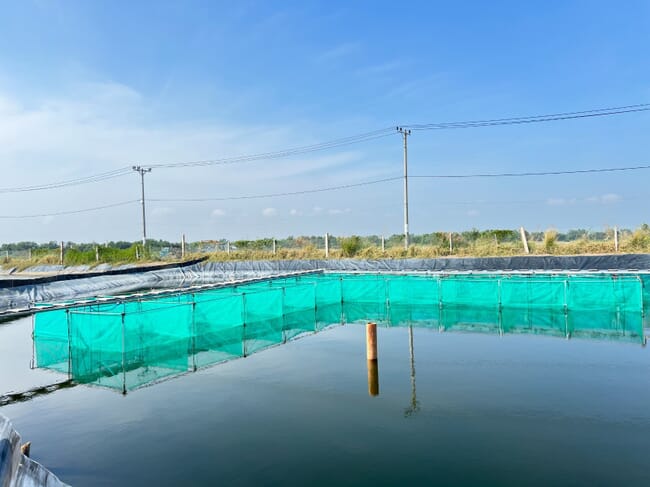
Regulations and availability
GreenSage Prebiotics has already been granted approval to sell Pretego in Thailand and is working on regulatory approvals in Canada, Chile, Ecuador, Indonesia, Philippines, USA and Vietnam.
In the meantime, they are looking to scale up production.
“If we’re going to scale up, we’ll need to either build our own facility or – ideally – find a contract manufacturing organisation that could produce it on an as-needed basis,” Saville explains.
Since being established in 2020, GreenSage has been funded by the founders and grants from Natural Products Canada and the province of Nova Scotia, with the first external investment coming from Hatch Blue – GreenSage Prebiotics participated in Hatch Blue’s fifth accelerator programme in 2023 – followed by a more recent equity investment from Bromac Capital.
However, as Saville explains, they are now looking for additional investors and strategic partners.
“We’re looking to raise between US$1.2 and $2.5 million – depending on whether we need to outfit our own production facility or whether we can produce with a contract manufacturing organisation,” he says.
As well as upscaling production this would allow them to grow their customer service and sales team.
“We’re looking at producing between 200 and 700 tonnes a year – it’s only a tiny fraction of the overall market. The potential demand from shrimp and salmon alone approaches 30,000 tonnes a year, which is why we’re really excited about the opportunity,” Saville enthuses.
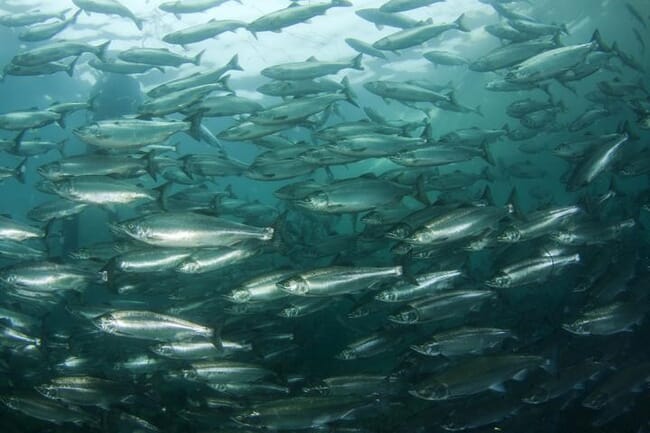
In terms of location, they are weighing up the relative merits of access to the raw materials (ie coconuts) and access to the markets, while also factoring in the possible sale of at least one co-product for use as a straight animal feed – which would most likely be sold in Australasia, Europe and North America.
“Either way it’s really key that we’re on the coast, given the international shipping that will be required,” Saville notes.
Development plans
Looking ahead, GreenSage Prebiotics are by no means short of ambition – in aquaculture and beyond – and are currently looking to diversity their product range.
“We’ve been evaluating different compositions, because we have seen from some of our in vitro work, depending on the pathogen, a slight shift in the composition could give us better outcomes. So I anticipate that we’ll have multiple products targeted to different pathogens –our product may be a bit different if it’s targeting E. coli or Vibrio,” Saville explains.
The mention of E. coli suggests that they’ll be looking beyond aquatic animals soon too.
“Aquaculture is our beachhead, it’s a huge opportunity and a huge need, given the challenges with infections within that sector, so we see that building first,” Saville emphasises.
“And, in parallel we expect to build the opportunity in companion animals. And there’s also a longer-term opportunity for our product in human health. Each of these markets are big opportunities in their own right, but will develop at different rates,” he concludes.




